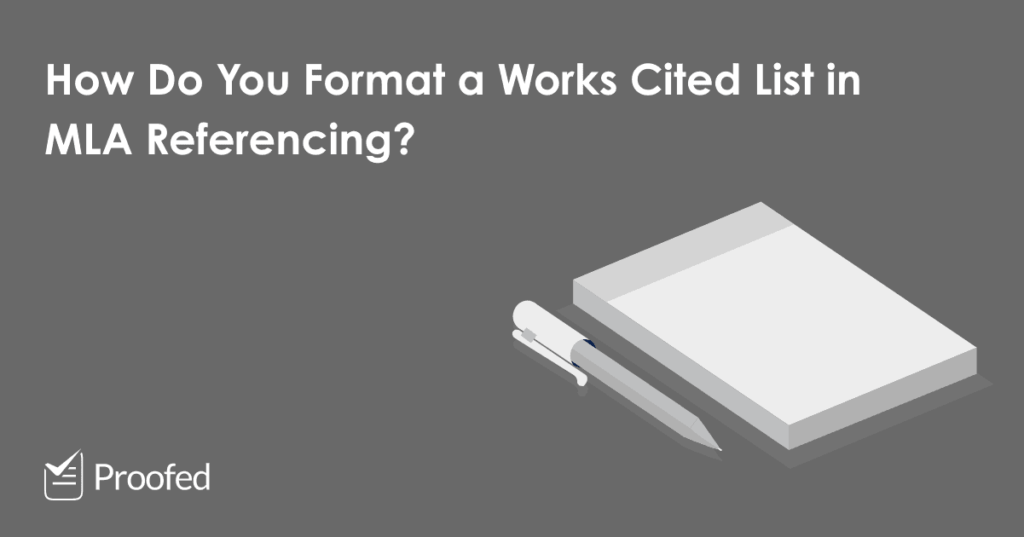If you’re using MLA referencing for an essay or paper, you’ll need to include a “Works Cited” list. But what should this include? And how do you format one? Check out our quick guide to find out what you need to know.
How Does MLA Referencing Work?
MLA referencing is a citation system designed by the Modern Languages Association. In this system, you cite sources using a parenthetical reference that gives the author’s surname and a page number, like this:
Journals require a standard approach to referencing (Jenkins 31).
But you also need to give the full publication information for every source you cite in your work. These references go in a reference list, known in MLA as the “Works Cited” list, at the end of your paper.
How to Format a Works Cited List
Basic rules for formatting a “Works Cited” list in MLA referencing include:
- Start your list with the title “Works Cited.”
- Order sources alphabetically by the first element of the entry. This is usually the first name author’s surname, but this can also be the first main word in the source’s title if it has no named author.
- For each source, give the first-listed author’s surname first (i.e., Surname, First Name). If the source has two authors, give the second author’s names in the conventional order (e.g., “Smith, John, and Susie Jones”).
- For sources with three or more authors, only give the name of the first author, then use “et al.” in place of the other authors’ names.
- Capitalize all words in the titles of books, articles, etc., except articles, prepositions, and conjunctions (unless these are the first word of a title or subtitle, in which case they should also be capitalized).
- Italicize the titles of longer works (e.g., books and journals) and put the titles of shorter works (e.g., book chapters, articles) in quote marks.
- Use “p.” for one page (e.g., “p. 931”) or “pp.” for a range of pages (e.g., “pp. 91–102”). Give page numbers efficiently by omitting any repeated information (e.g., “pp. 225–8” rather than “pp. 225–228”).
- For online sources, include a digital object identifier (DOI). If there isn’t a DOI, give a URL, but don’t include the “http://” bit.
- End every entry with a period, even after a URL.
- Use a half-inch (1.27cm) hanging indent for each entry in the list.
MLA Reference Formats
The information required for each entry in a “Works Cited” list depends on the source type. Typically, though, references should include the author’s name, a title, and the publication information. For example:
Book
Jenkins, Bruce. Referencing 101: A Guide. PI Publications, 2020.
Find this useful?
Subscribe to our newsletter and get writing tips from our editors straight to your inbox.
Journal article
Smith, John. “A Comparative Study of Referencing Systems.” The Journal of Citation Studies, vol. 12, no. 1, 2019, pp. 225–8.
Web page
Smith, John, and Susie Jones. “A Beginner’s Guide to Academic Referencing.” StudentResources, 18 Oct. 2014, www.studentresources.com/guides/citations-styles/a-beginners-guide-to-academic-referencing/.
For more on source formats in MLA referencing, see our blog posts.
Expert Student Proofreading
You now know the basics of how to create a “Works Cited” list in MLA referencing. But if you’d like an academic writing expert to check your work, including your references, why not submit a document for proofreading?
